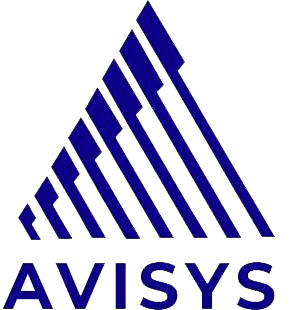Operational Support Systems (OSS) in the telecom industry are crucial, serving as the backbone enabling companies to manage their network operations efficiently. Despite their critical role, many OSS solutions are notoriously complex and non-intuitive, especially for new users. In a world where user experience is a competitive differentiator, the role of rigorous testing to enhance this experience cannot be understated.
Importance of Intuitive OSS Interface
It is not just about having an OSS solution; it is about having one that is intuitive and user-friendly. A system that new users can navigate naturally will speed up processes, decrease error rates, and increase overall productivity.
- The Impact of Non-intuitive Systems on New Users
Imagine a new employee facing a screen full of unorganized tabs, buttons, and forms with minimal direction. The time they take to understand and adapt to this system could have been used in productive tasks that add value to the organization.
Read also: How Telcos are Revolutionizing Customer Experience?
- Use Case
Consider a telecom giant that is facing high employee turnover due to the frustration associated with using their complex OSS system. After an overhaul aimed at simplifying the user interface, based on extensive user feedback backed by a robust testing CoE framework, the company will not only retain more employees but will also witness a surge in overall productivity.
Testing for User Experience
To avoid the pitfalls of a non-intuitive interface, rigorous testing CoE framework and methodologies must be applied, such as:
- Usability Testing Services: Ensuring the system meets users’ needs and expectations.
- User Acceptance Testing (UAT) and functional testing services: Verifying that the solution works for the user under real-world conditions. Such performance testing services can reveal UI/UX issues before they reach the end-user.
A telco when invests in rigorous usability testing services for their new OSS will achieve insights and analytics enabling them to redesign their interface proactively, resulting in decreased training time for new employees.
Read also: The Crucial Role of OSS/BSS Testing in Telecom Operations
Testing Methodologies
Effective testing CoE services and strategies that can be used in the development cycle of OSS solutions include:
1. Agile Testing CoE Services
In the world of Telecom OSS, systems are complex and need to handle large volumes of data, transactions, and user interactions. Agile Testing is designed to accommodate this complexity by ensuring that testing is integrated into the development process from the very beginning.
How it works:
- Integrated Teams: Agile Testing involves close collaboration between developers, testers, and business stakeholders. Rather than working in isolation, these groups work together as a single team also known as Agile POD engagement.
- Continuous Feedback: Because testing is conducted alongside development, issues are identified and addressed quickly, often within the same iteration. This continuous feedback loop is vital for Telecom OSS where systems need to be highly reliable and available.
- Automation: Given the scale and complexity of Telecom OSS, automated testing is often a key component of agile development services and testing. Automated tests can quickly and efficiently validate that new changes have not broken existing functionality (regression testing), which is essential when dealing with complex systems that support critical telecom operations.
- Incremental Progress: Agile Testing aligns with the broader agile principle of incremental development. Rather than trying to build and then test a complete OSS all at once, the system is developed and tested in small, manageable increments.
- User-Centric: Agile development services and testing in Telecom OSS often involves a strong focus on the end user’s needs (in this case, telecom operators and other stakeholders). Test cases are not just designed to check technical requirements but to also ensure that the system will meet the real-world needs of its users.
- Adaptability: Telecom regulations, technologies, and customer needs can change rapidly. Agile Testing CoE services are designed to be flexible and adaptable, allowing the development and testing team to pivot quickly in response to new information.
Benefits of Agile POD Services and Testing
- Quality assurance: Ensures that issues are identified and addressed early, reducing the risk of late-stage defects that are costly and time-consuming to fix.
- Speed to market: OSS features can be developed, tested, and deployed more quickly.
- Stakeholder engagement: The collaborative nature of Agile Testing means that business stakeholders are more involved in the process.
2. Continuous Testing CoE Services
Involves a steady application of testing at every stage of development to ensure constant progress and quality. In Telecom OSS, where systems are expected to be robust, scalable, and able to handle large volumes of data and transactions, continuous testing CoE framework ensures that the software is always in a state where it can be safely and confidently released to the production environment.
How It Works:
- Automated Test Suite: In continuous testing CoE framework, an extensive suite of automated tests covers various levels of testing, from unit tests (that test individual components) to integration tests (that test interactions between components) and end-to-end tests (that test complete workflows).
- Integration with the Development Pipeline: Tests are run automatically as part of the Continuous Integration/Continuous Deployment (CI/CD) pipeline. This means that every time code is committed to the repository, the entire suite of tests is automatically triggered, and the OSS software is built and tested end-to-end.
- Immediate Feedback: As soon as a test fails, the development team is alerted. This allows issues to be identified and fixed immediately, which is critical in a Telecom OSS environment where errors can have significant operational and business impacts.
- Constant Monitoring: Continuous testing CoE framework in Telecom OSS also involves ongoing monitoring of the production environment. This enables the team to detect issues in real-time, even after the software has been deployed.
- Frequent Releases: Since continuous testing ensures that the software is always in a release-ready state, it enables more frequent and reliable releases. This is beneficial for telcos, where being able to quickly adapt to new technologies or regulatory changes can be a significant competitive advantage.
Benefits of Continuous Testing for Telecom OSS:
- Higher Quality Assurance: Continuous testing helps in early detection of issues and reduces the risk of defects.
- Faster Development Cycles: Continuous testing CoE services facilitate more frequent and reliable releases, enabling telcos to respond more quickly to changing technologies, regulations, and market dynamics.
- Reduced Costs: By catching issues early, when they are cheaper and easier to fix, continuous testing CoE framework can significantly reduce the overall cost of software development. For large and complex Telecom OSS, this cost reduction can be substantial.
- Enhanced Customer Experience: For Telecom companies, downtime or errors in OSS can lead to issues in customer service and operations. Continuous testing services, by ensuring high software quality, helps in providing a better and uninterrupted service to the end customers.
A/B Testing
Comparing two versions of a page or app against each other to determine which performs better. In the context of Telecom OSS, A/B Testing can be a powerful method for optimizing the user interfaces and workflows that network operations staff use to manage and monitor telecommunications networks and services.
How It Works
- Identify a Specific Element to Test: First, the team identifies a specific aspect of the OSS interface or workflow that they want to optimize. This can be the layout of a dashboard that network operators use to monitor network status.
- Create Variants: Next, two different versions of the identified element are created: Version A (the control, often the current version) and Version B (the variant, which includes the proposed changes). In an OSS context, Version B might feature a different arrangement of controls on a network configuration screen, or different wording in an error message.
- Run the Experiment: The two versions are then presented to different subsets of users under controlled conditions. For example, half of the network operations team might be given access to Version A of a particular OSS screen, while the other half uses Version B.
- Collect and Analyze Data: While the experiment is running, data is collected on how users interact with each version. In an OSS context, this might include metrics like the time it takes for a network technician to complete a certain task, the number of errors made, or the user’s satisfaction level with the interface.
- Analysis: After the experiment, the data from both groups is compared. The version that performs better according to the pre-defined metrics is then selected for wider rollout.
- Improvements: Based on the results, the superior version is adopted and deployed as the new standard. Lessons learned can also be applied to other areas of the OSS interface or system.
Benefits of A/B Testing for Telecom OSS:
- Optimized User Experience: A/B Testing services allow telecom companies to systematically improve the interfaces and workflows within their OSS. This can lead to a more intuitive and efficient experience for network operations staff.
- Data-Driven Decisions: A/B Testing allows telecom companies to make decisions based on hard data. This can provide a high level of confidence that the changes being made are beneficial and data-driven.
- Reduced Risk of Negative Changes: By testing a new feature or change with a small group of users before a full rollout, telecom companies can avoid the risk of deploying a change that turns out to have negative consequences.
- Increased Efficiency: For Telecom OSS, optimizing the user interface and workflows can lead to significant gains in efficiency and productivity. For example, if a new layout for a control panel allows telecom network technicians to configure network devices more quickly, that could translate into substantial time and cost savings for the company.
- Enhanced Customer Service: Improvements in the OSS interface can lead to faster and more effective network management, which ultimately benefits the end customers of the telecom company. For instance, a more efficient interface allows network problems to be resolved more quickly resulting in better service uptime for customers.
Benefits of Investing in Telecom OSS Testing CoE Framework
- Improves User Experience: Enables intuitive and user-friendly interfaces. Reduces the learning curve for new employees, enhancing their productivity.
- Enhances Operational Efficiency: Streamlined and well-tested OSS solutions lead to faster and more reliable operations. Reduced error rates in network configurations and operations.
- Quality Assurance and Risk Mitigation: Ensures high quality of software, reducing post-deployment issues and customer complaints. Early detection and fixing of issues reduce the risk of large-scale operational problems.
- Accelerates Time-to-Market: Allows for quicker development, testing, and deployment of new features and improvements. Enables telecom companies to adapt rapidly to changing technologies and regulatory environments.
- Cost-Effective: Rigorous testing CoE framework reduces the cost associated with fixing issues later in the POD software development cycle.
- Enhances Customer Satisfaction and Loyalty: High quality services leading to improved customer satisfaction. Reduced downtime and service interruptions leading to higher customer loyalty and increased revenue.
- Data-Driven Optimization: A/B testing and other methodologies provide actionable insights for system improvements. Allows for informed decisions based on concrete data rather than assumptions.
- Scalability and Future-Proofing: Ensures that the OSS can handle the growth in data and user load effectively. Makes the OSS more adaptable to future changes.
- Facilitates Regulatory Compliance: Ensures that the OSS is built and operates in line with the latest regulatory requirements. Simplifies the process of adapting to new or updated regulations.
- Promotes Collaborative Work Environment: Agile and continuous testing methodologies encourage closer collaboration between development, testing, and business teams. Enhances communication and stakeholder engagement throughout the development process.
- Reduced Support and Maintenance Costs: Intuitive telecom OSS solutions reduce the number of errors and support tickets.
Takeaway
As highlighted through the course of this blog, rigorous telecom testing CoE framework is not a mere checkbox in the development cycle of telecom OSS solutions. It’s a mission-critical activity that shapes the usability and user experience of the systems that are central to telecom operations.
As competition gets cutthroat, and as user experience becomes more central to success, it’s a wakeup call for telecom companies. Employ robust, thorough, and continuous testing CoE services and strategies for your telecom OSS development cycles. It’s not just a matter of quality; it’s a matter of survival in today’s fast-paced telecom landscape.
Ready to reimagine your telecom OSS solution with rigorous testing? Book a FREE consultation today to speak with our Telecom OSS Testing expert and uncover the potential of intuitive, reliable, and efficient OSS systems for your organization.



